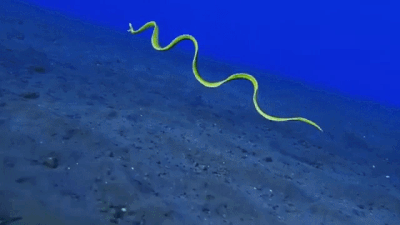Emergent Literacy
Swimming with Silly Snakes

Rationale: During this lesson the kindergarten students will identify /s/, this phoneme will be represented by S. They will use the s sound and do a swimming motion to connect the letter with a sound analogy. The students can also use phoneme awareness with /s/ by having words that rhyme with beginning letters.
Materials:
-
Primary paper ( each student needs 1 page).
-
Pencil (each student needs 1 sharpened pencil).
-
Picture of a swimmer in water with S sideways.
-
The book; The Sleepy Little Alphabet by Judy Sierra (Knopf Books for Young Readers; 2014). SEE BELOW FOR BOOK LINK
-
Word cards that say, SLEEP, ROAST, SING, SIP, RATS, and SWING
-
Worksheet for identifying /s/ and writing it. (see below)
Procedures:
-
First tell them that they are going to learn secret code today. We are going to figure out what words start with the letter S. Since our mouth moves when we talk we are going to investigate the letter S and make a /s/ sound. Then move arms in a swimming motion to tell them that when you Swim (move arms left then right,etc.)
-
Let’s all pretend we are swimming. Move your arms back and forth over your head going from left arm over head to right arm, turn your body with the movements. Now that we know how our bodies moves when we swim now we can figure out how are mouth moves when we make the /s/ sound. Say put your tongue on the top of your mouth and hiss out air. This makes the /s/ sound like a snake or a swimmer. When you are swimming you breathe in before you go underwater, this also makes the /s/ sound.
-
Now we can look at the word frost. We are going to stretch out and pretend we have putty in our hands that we are pulling apart. Tell me when you hear a swimmer breathing in that /s/ sound. Fff-r-r-o-st. then again but slower (continue to move hands as you pull apart putty). F-f-f-r-r-o-s-s-s-t. I heard the swimmer come up for air! Now let’s all swim and come up for air with the swimmer as we say frost.
-
Ok now that we are pretty good Swimmers, we are going to start swimming laps as we try a tongue twister [See chart]. Sam said he was sorry he put salt in Sally’s sandwich. Now lets, Swim everytime we hear S in the sentence. Now I will read it again. Sam said he was sorry he put salt in Sally’s sandwich. Now let us do it slowly. Sssssam sssssaid he was ssssorry he put sssalt in sssssalllyssss ssssandwhich.
-
Now that we are tired from all that swimming let’s get out our primary paper and pencil so that we can draw the swimming motion. We use the letter S to spell /s/. The S looks like the silly snake that is swimming in our pool. The silly snake also brought her baby snake to the pool so we can draw her too. Now we have an uppercase S and a lowercase S. You are going to make the top of the snake all the way to the fence and then the back of the snake backwards from the fence down. Now I am going to walk around and see who has the snake that is in our pool. After I put a /s/ sticker on your paper you are going to make 10 more mama snakes on your paper.
-
Okay, now that we have gone swimming and found the snake in our pool, we are going to pick out our swimmer in a crowd of words. So when I ask you a work, you tell me if the swimmer is breathing in air by showing me the swimming motion when you repeat it back to me. Call on students as you ask these words. Do you hear /s/ in step or flop? Stop or go? Talk or sorry? Start swimming if you hear /s/ for every time you hear the /s/ in this sentence. The silly, snake, started swimming all the way to the deep end.
-
“We are now getting tired from all of our swimming today, so we are going to read a book all about the letters getting ready for bedtime. Each letter does something else before they go to bed, so we are going to see if it time for them to fall asleep or not.” Read the whole book and then go back to the S page to find out if all the letters have gone to sleep. Now have all the kids say a name that starts with S and then have them pretend to fall asleep on their desk. So they could say sally is sleeping, Sam is sleeping, etc.
-
Then have all the children wake up to get ready to go swimming again. Now that we are awake for another day, we are ready to put sunscreen on and start swimming. Show the word card that says SLEEP. Explain how you know to swim in Sleep. Since we swim at first we say sssssss-l-ee-ee-p. You try some: ROAST: roast or post? SING: sing or thing? SIP: sip or flip? RATS: rats or cats? SWING: swing or thing?
-
For assessment: distribute the worksheet. The student can begin by tracing the mama and the child snake. Then circle the objects that beging with S. Call up each student individually to read off the phonetic cue words from step #8.
Worksheet link:
https://www.superteacherworksheets.com/phonics-beginningsounds/letter-s_WFNND.pdf?up=1466611200
Website for tongue twister: http://wp.auburn.edu/rdggenie/home/materials/ticklers/
Reference: Mckenzie Griggs: https://mls0110.wixsite.com/ctrd3000/emergent